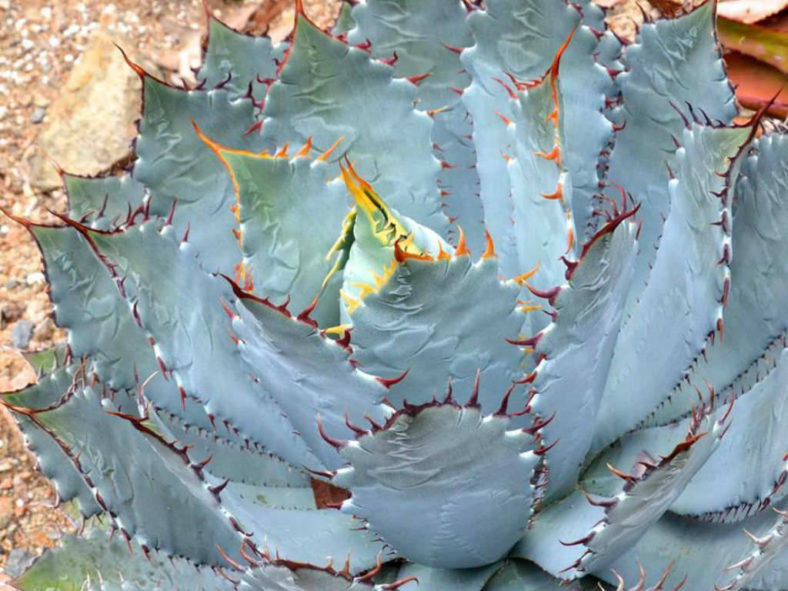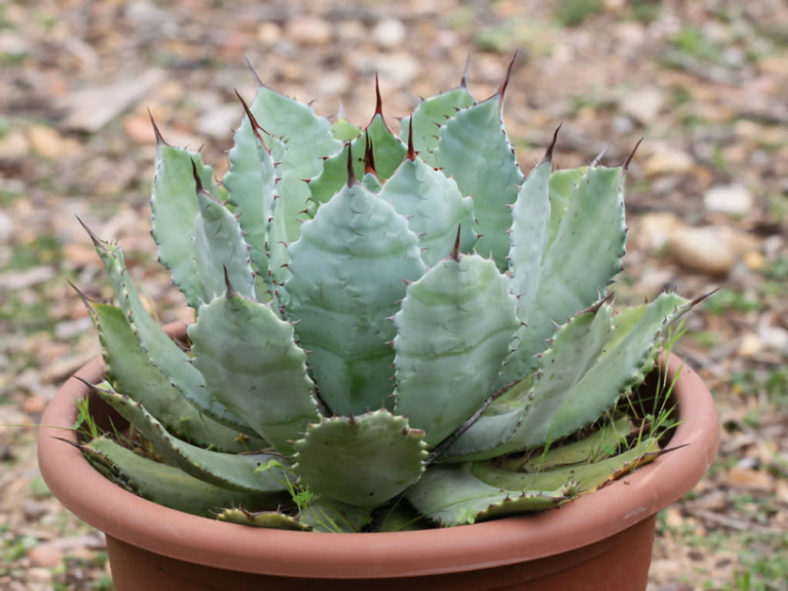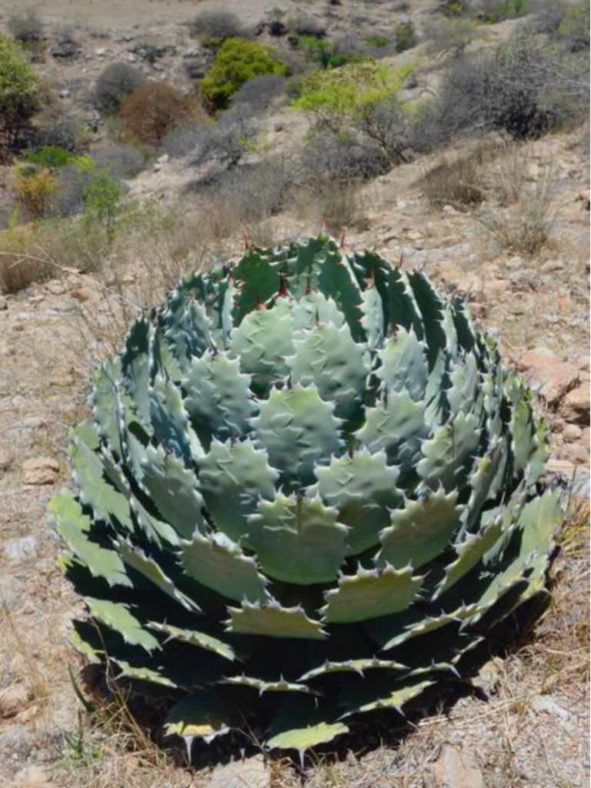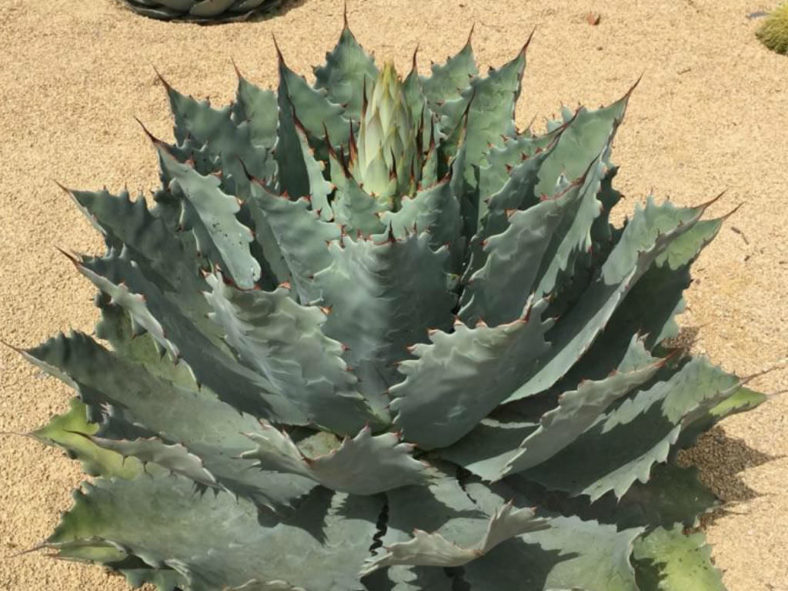Scientific Name
Agave guadalajarana Trel.
Common Name(s)
Guadalajara Agave, locally known as Maguey Chato
Scientific Classification
Family: Asparagaceae
Subfamily: Agavoideae
Genus: Agave
Etymology
The specific epithet "guadalajarana (gwa-da-la-HAR-an-a)" refers to Guadalajara, where the species was first discovered.
Origin
Agave guadalajarana is native to Mexico. It occurs in the Guadalajara region in Jalisco and the Ceboruco volcano area in Nayarit.
Description
Agave guadalajarana is a succulent plant that forms an attractive, usually solitary rosette of bluish-gray leaves marked with bud imprints. The rosette can grow up to 2 feet (60 cm) tall and 3 feet (90 cm) in diameter. The leaves have brown, sharp marginal teeth and a long terminal spine.
The flowers are tubular, light green with a flush of purple at the tips, and can measure up to 2.4 inches (6 cm) long. They appear in clusters at the ends of short branches. The flower spike emerges in spring and can grow up to 16.4 feet (5 m) tall. Unfortunately, the rosette dies after flowering.
The species is similar and often confused with Agave inaequidens.

How to Grow and Care for Agave guadalajarana
Light: These plants require full sun to part shade. If you are growing Agaves indoors, choose a bright, sunny window with as much sun as possible. Agave plants love going outside from spring to fall.
Soil: Agaves will tolerate most soils as long as they have good drainage but prefer sandy or rocky soil.
Hardiness: Agave guadalajarana can withstand temperatures as low as 25 to 50 °F (-3.9 to 10 °C), USDA hardiness zones 9b to 11b.
Watering: Mature plants are very drought tolerant. From spring to fall, water thoroughly your Agave when the soil mix becomes dry. In winter, water sparingly about once a month. Plants in containers require more frequent watering than those in the ground.
Fertilizing: Give your Agaves a small amount of fertilizer in the spring during the first two years.
Repotting: When the pot becomes full of roots, it has become pot-bound. If you notice your Agave becoming pot-bound, repot it with new soil in a pot slightly larger than the old one.
Propagation: This species rarely produces offsets, and it must be started anew from seeds.
Learn more at How to Grow and Care for Agave.
Toxicity of Agave guadalajarana
Agave guadalajarana is not toxic to humans, but the sap of the leaves and inflorescence may be mildly poisonous to children and pets.
Links
- Back to genus Agave
- Succupedia: Browse succulents by Scientific Name, Common Name, Genus, Family, USDA Hardiness Zone, Origin, or cacti by Genus
Photo Gallery
Click on a photo to see a larger version.


